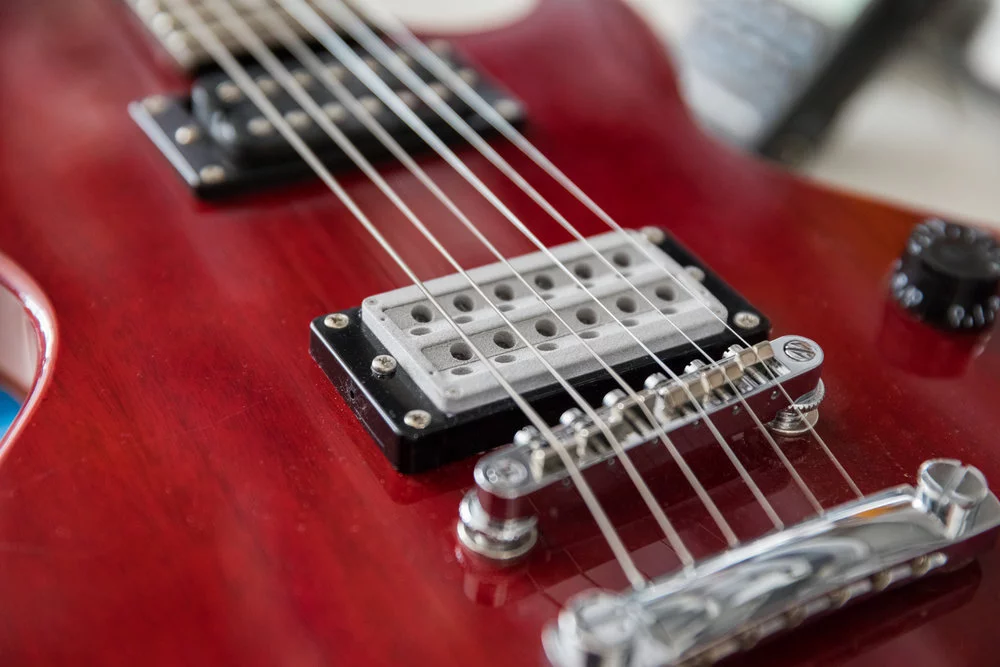Rather than use magnets and coils to convert string motion into an analog voltage for amplified output, the ōPik uses infrared light to capture the vibrations of the strings above it. It first appeared online in 2017, and after much tweaking, testing and refinement, the optical pickup has now been launched on Kickstarter.
The humbucker-like pickup features two strips of infrared LEDs. Any vibration of a string sat above an LED is picked up immediately by a photodiode receptor, which is then converted into a signal for output through an amp. The ōPik is a powered pickup, and will come with a 9-volt power box that can be plonked on a pedalboard. Patented technology filters out any background light, so it can be used in a well-lit room or under powerful stage lighting.
Though its makers stress that this pickup is all analog in design – it's "not an effect, it's not a modeler, and it's not a synthesizer" – output parameters can be tweaked digitally through a companion app running on a smartphone connected to the pickup over Bluetooth. This means that the player is able to adjust the individual output volume and cutoff frequencies, and apply low- and high-pass filters, for each string. Changes can be saved for quick recall on the fly.

In a novel twist, the strings on your guitar don't have to be metal. Light4Sound says that the system can pick up nylon strings, for example, "as well as many other string materials." You could even go down a funky rabbit hole and use a mix of strings to explore different sonic textures. And the ōPik pickup is reported to work "extremely well" with effects pedals, with players able to customize settings to better match specific stomps.
You will need a host guitar that already has a standard humbucker-shaped pickup slot to pop the ōPik into, unless you want to break out the tools and make room for it yourself. And, for the moment at least, the optical pickup has been designed to be installed at the bridge position only (rather than actually being part of the bridge, as with the Lightwave technology from Willcox Guitars) – though the company is planning on developing a unit that can sit at the neck position. A bass guitar prototype has already been made, so thunder-thumpers might be able to take advantage of the tech in the future.
For now though, the project is focusing on electric six string installation and is raising production funds on Kickstarter. Pledges start at US$179 and, if all goes to plan, shipping is estimated to start in October. The video below has more.
Source: Light4Sound









